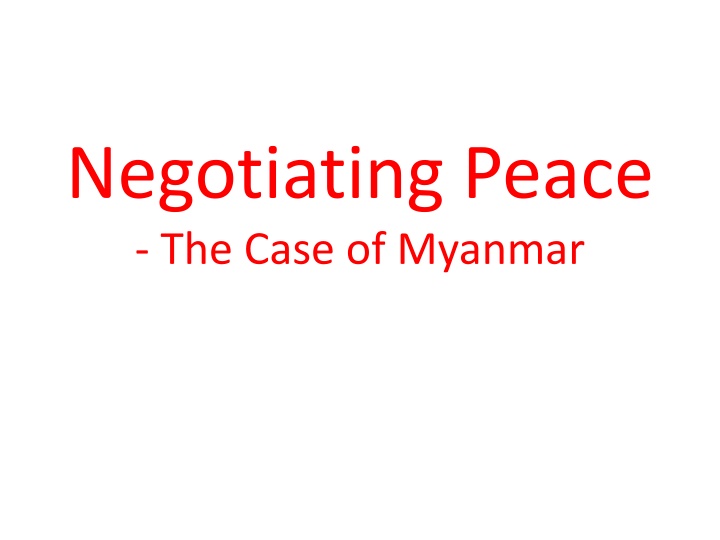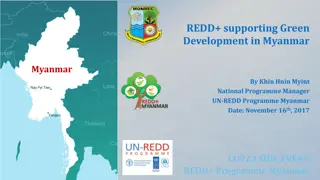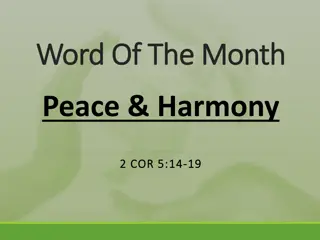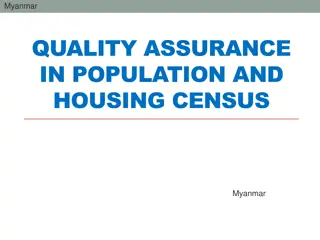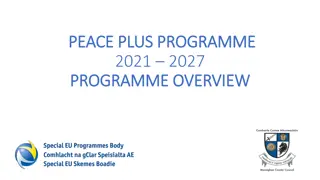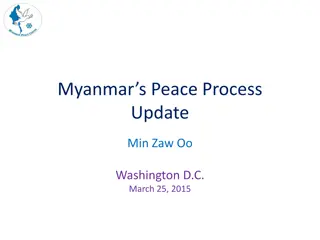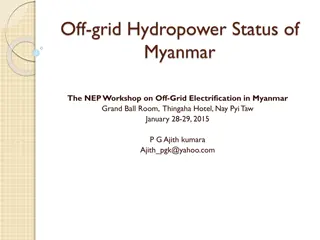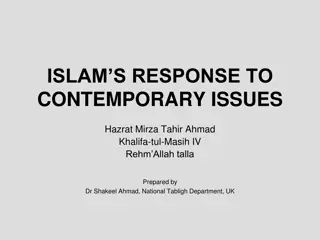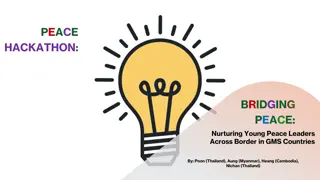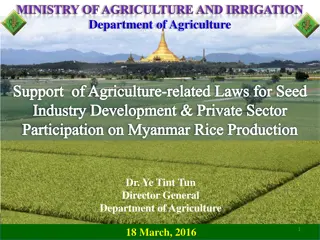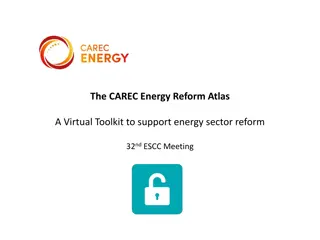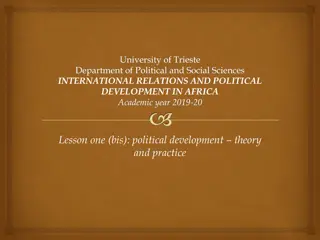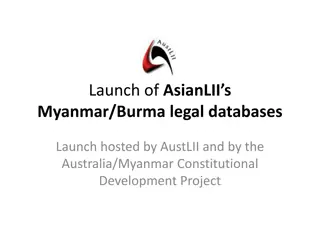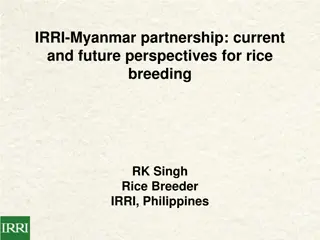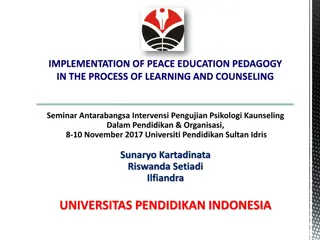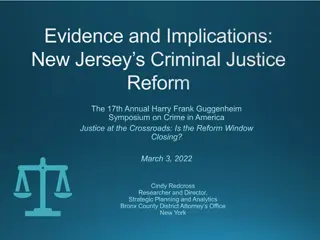Negotiating Peace: The Case of Myanmar's Political Reform Process
The peace process in Myanmar involves negotiations with 21 ethnic armed organizations, leading to bilateral talks and ceasefire agreements. Key steps include the implementation of the Union Peace Accord, political dialogue, and the ratification of peace agreements by Parliament. The process aims at power and resource sharing, with a focus on equal respect for religion.
Download Presentation

Please find below an Image/Link to download the presentation.
The content on the website is provided AS IS for your information and personal use only. It may not be sold, licensed, or shared on other websites without obtaining consent from the author.If you encounter any issues during the download, it is possible that the publisher has removed the file from their server.
You are allowed to download the files provided on this website for personal or commercial use, subject to the condition that they are used lawfully. All files are the property of their respective owners.
The content on the website is provided AS IS for your information and personal use only. It may not be sold, licensed, or shared on other websites without obtaining consent from the author.
E N D
Presentation Transcript
Negotiating Peace - The Case of Myanmar
Myanmar Peace Process Government in peace negotiation with 21 Ethnic Armed Organizations
Political Reform Timeframe and Peace Process Bi-lateral peace talks With 21 Armed Groups 14 Bi-lateral Ceasefire Agreements ASEAN Chair 2010 (Nov) 2011 (Aug) 2013(Nov) 2014 2015 Start negotiating on Nationwide Ceasefire Agreement (NCA) ELECTION New President Govt Vs. 16 Armed Groups (Collectively) 5 Armed Groups: Bi-literal talks with Government
Myanmar Peace Process DDR/SSR Implementation of Peace Accord Ratification of Peace Accord by Parliament Principles for amendment of constitution or existing laws Union Peace Accord Outside Parliamentary process Agenda: Power sharing; Resource sharing; equal respect on religion Political Dialogue Political Dialogue Framework Nationwide Ceasefire Agreement Ceasefire + Guarantee of political process 2014 Bi-lateral talks/Preliminary talks 2011
